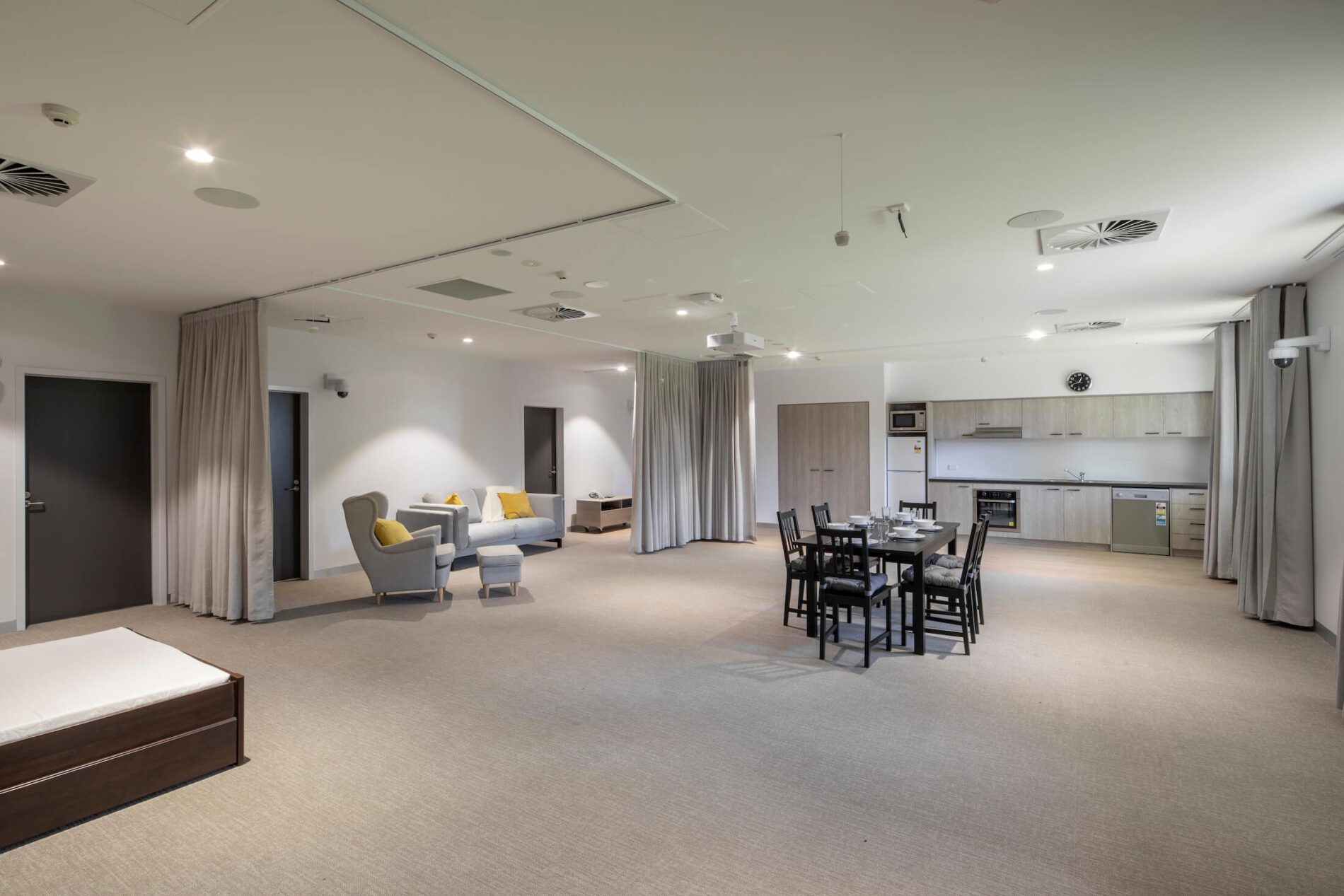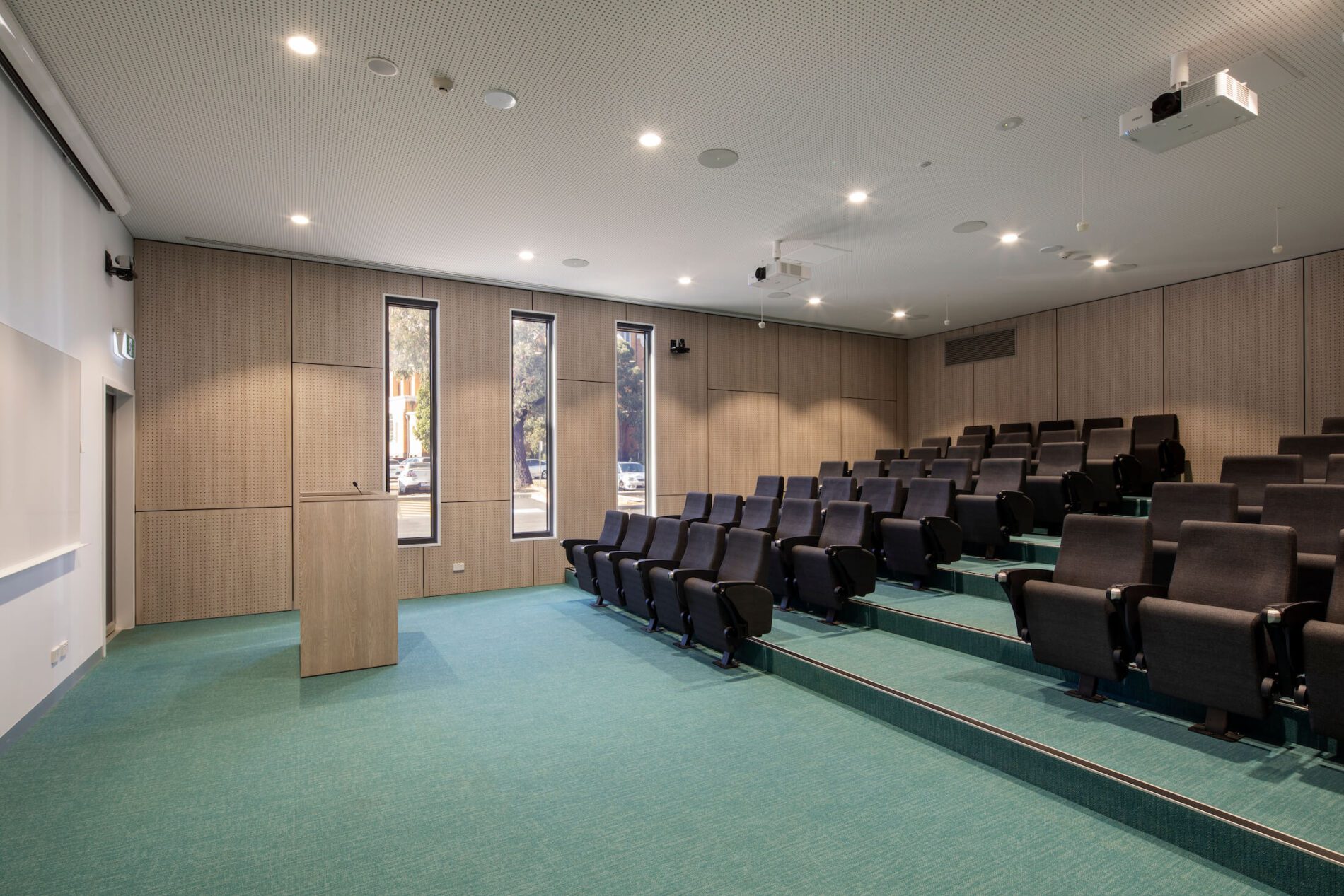As experts in justice sector design, we understand the potency of calming, trauma-informed architecture. We have designed Children’s Court waiting rooms and cubby spaces that comfort victims and their families. Prison cells with more hopeful outlooks have contributed to lower incidence rates in incarceration, too, assisting rehabilitation goals. But in a recent collaboration with the Victoria Police at the Academy in Glen Waverley, we inverted this thinking to help drive innovative education outcomes for recruits.
The Centre of Learning for Family Violence opened in April 2019, and will feature this evening on Channel 31’s Sacred Spaces. In a first for police educational infrastructure design in Australia, FMSA collaborated with Victoria Police to realise an innovative simulation centre that encourages a deep understanding of the dynamics of family violence, and develops strategies and practical skills for the management of perpetrators and unpredictable scenarios.
According to Kevin Casey, the Assistant Commissioner of People Development Command – which includes the Victoria Police Academy, the police respond to an increasing number of family violence incidents every year. In the past 12 months to June 2020, Victoria Police responded to more than 88,200 family violence incidents, an increase of 6.7 per cent and the highest on record. Consuming between 40 and 60 per cent of policing time, this represents a significant policing challenge that calls for considered research and investment. The Sacred Spaces broadcast offers a crucial insight into the design of this innovative and victim centric training facility.
We know it is the accumulation of design elements that amount to either a positive or negative experience of architecturally designed space. Where trauma-informed design should be soothing, the Centre of Learning for Family Violence attempts to curate the opposite effect. Complex sensory elements are layered within the design in an effort to raise recruits’ anxiety levels, activate opportunities for decision-making, and prepare them to better respond to the incidents they will eventually face on duty.
Details demonstrate a compounding of visual and other sensory cues that might distract recruits and test their training. Beyond the high fence, long pavers draw the visitor to the front door, and wet-look grass offers a further subliminal deterrence from crossing the yard to check blind corners for potential threats first. Educators layer the built environment with “scent theatre” – acrid and overpowering smells that offer further sensory distraction.



